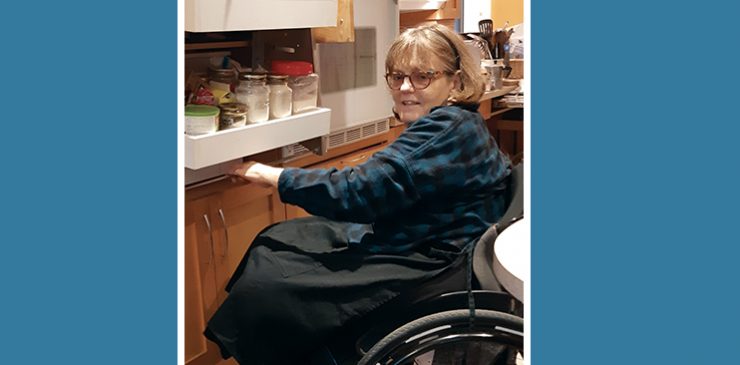“It’s not the years, it’s the mileage”, wise words from Indiana Jones when responding to how he had aged. Getting older comes with more than silver hair, crow’s feet and a tendency to forget things every now and then. Aging is a process that happens to all of us as we gradually lose the ability to easily do things we could do when we were younger. There is a lot to like about aging. We grow wiser, we may have more time to spend with loved ones, perhaps we develop true mastery in our work or our hobbies and can enjoy the reward of mentoring younger generations.
The price of growing older is adjusting to declining function, whether this is a decrease in strength, aerobic capacity and slower reflexes, or an increase in fatigue, pain and stiffness. We may give up some of our independence, and that can be painful. These changes can happen faster for people with spinal cord injuries.
People living with spinal cord injury have already adjusted to new and sometimes unwelcome, circumstances in their life. Aging introduces another element of change. Age and use are two separate and contributing factors to be considered when evaluating how our bodies are holding up as time goes by. This is especially true for people with an SCI where the numbers of years since injury can be as large a factor as your chronological age. Someone in their 40s who sustained an SCI in their 20s could be dealing with issues that a newly injured 60-year-old will not face for some time. Indiana Jones was right; the mileage can indeed have an impact.
“I was very independent for many years and thought doing everything for myself, focusing on being independent was what was important. I was not presented with the bigger picture looking at the effects of my choices long term. What I do now impacts what I can do later. Now years later living with the effects of aging and the strain on my body, if I could do it all over again, I would take into consideration what I could do that would still maintain my independence but in a manner that maintained the quality of living as I aged.”
Everyone experiences some age-related limitations as we get older. With age we have to adapt and restructure expectations to continue to thrive.
Cortree is developing a series of courses to help people in the SCI community develop healthy aging strategies. The goal of the series is to help you preserve your good health as you age and the wear and tear adds up. The courses will look at Equipment, Mental Health, Heart Health, Skin Health, Joints and Mobility and Osteoporosis. Each course will provide accessible, up to date, expert and lived experience knowledge shared by clinicians and people in the community who are willing to share what works for them.
In the first course, Aging and Equipment, we explain the concept of Universal Design. The course reviews some common challenges faced by people living with an SCI. It looks at how you can make your home environment work for you as you age. We get to hear from others who share their stories and strategies which have improved their lives, like Christine Honsl.
Christine sustained a T12-L1 spinal cord injury in 1990. Regardless of the obstacles she faced she was determined to live her life as autonomously as possible. “I was very independent for many years and thought doing everything for myself, focusing on being independent was what was important. I was not presented with the bigger picture looking at the effects of my choices long term. What I do now impacts what I can do later. Now years later living with the effects of aging and the strain on my body, if I could do it all over again, I would take into consideration what I could do that would still maintain my independence but in a manner that maintained the quality of living as I aged.”
Some examples that Christine shares are “I lifted my manual wheelchair over my head for many years to stow it in my car. I would have purchased a lighter wheelchair or looked at a different model of vehicle with no lifting required. I would have renovated my bathroom to have a roll in shower instead of a tub. Having an adjustable bed earlier would have made my sleep positioning easier and quality of sleep a lot better.” She also acknowledges the importance of technology. “That is important too” she says, “equipment is always improving and there are new innovations to make life easier and save our bodies, so it is a matter of keeping up with new products while living our lives.”
In addition to the Cortree series of courses, SCIO will present virtual Peer Connection workshops that will continue to delve into each of the topics over the next year. Our first in the series will be held on May 20 and will focus on Aging and Equipment. Learn about adaptive equipment and assistive devices that can help you with day-to-day needs and keep you safe and independent at home. To register go to the upcoming events section on
www.sciontario.org.
THANK YOU
The Aging with an SCI series is being made possible with the generous support of a Creating Opportunity & Independence Grant from the Craig H. Neilsen Foundation. The Creating Opportunity & Independence grant supports non-profit organizations that provide programs and services that enhance the quality of life for individuals and families living with SCI. The Foundation seeks to partner with organizations that have a significant impact on their communities, affect people across the lifespan, and empower individuals with SCI.







